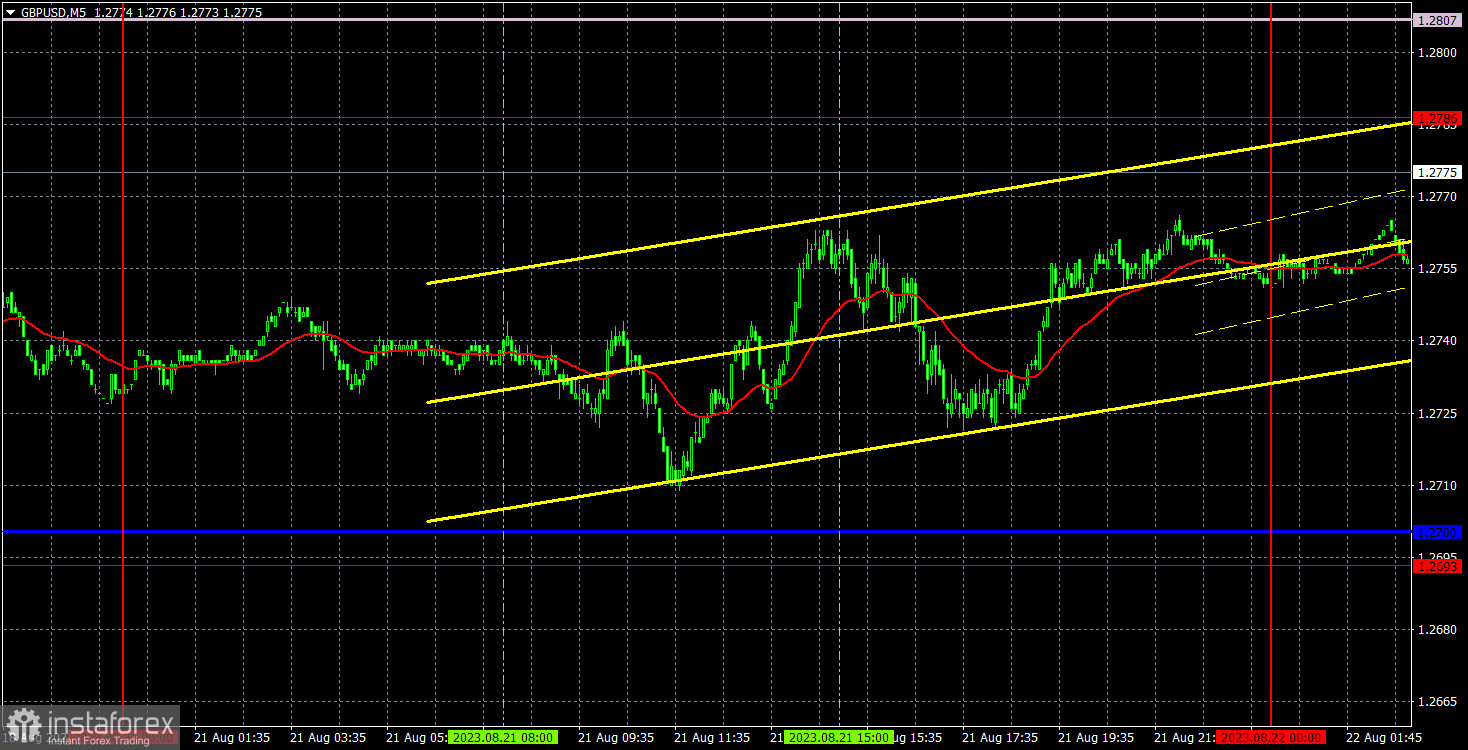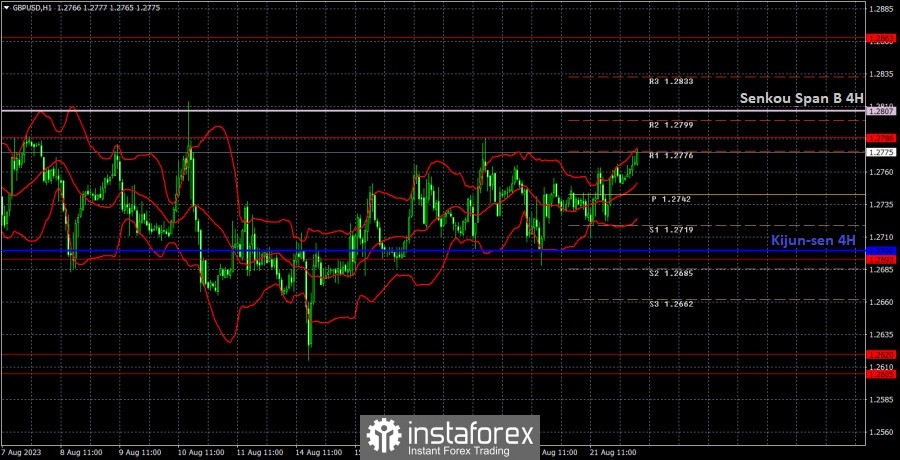Analysis of GBP/USD 5M

On Monday, GBP/USD showed sideways trades, which is clearly visible on the hourly chart. Since we have been observing a flat trend for several weeks now, there is nothing new to add to the technical picture. The pair stays in a limited price range and continues to trade with low volatility. So now traders have to decide whether they prefer to trade within a sideways channel or wait for the flat phase to end. Yesterday, there were no economic reports in either the US or the UK. In the chart above, it may seem that the pair did not stay in one place during the day, but in reality, it doesn't really matter as the volatility was 55 points.
There were no trading signals on Monday. Let us remind you that we have adjusted the price levels of the Senkou Span B and Kijun-sen lines, as they often move in a flat trend, and the price is directly next to them, which can lead to forming many false signals. Yesterday, the pair did not approach important levels and lines, which is a good thing, as the movements were quite chaotic.
COT report:

According to the latest report, the non-commercial group of traders opened 7,300 long positions and 3,300 short ones. Thus, the net position of non-commercial traders increased by 4,000 positions in a week. The net position has been steadily growing over the past 11 months as well as the pound sterling. Now, the net position has advanced markedly. This is why the pair will hardly maintain its bullish momentum. I believe that a long and protracted downward movement should begin. COT reports signal a slight growth of the British currency but it will not be able to rise in the long term. There are no drivers for opening new long positions. Slowly, sell signals are emerging on the 4-hour and 24-hour charts.
The British currency has already grown by a total of 2,800 pips, from its absolute lows reached last year, which is a significant increase. Without a downward correction, the continuation of the uptrend will be illogical. However, there has been no logic in the pair's movements for quite some time. The market perceives the fundamental background one-sidedly, ignoring any data in favor of the dollar. The Non-commercial group of traders has a total of 90,500 long positions and 39,500 short ones. I remain skeptical about the long-term growth of the pound sterling, and the market has recently begun to pay attention to short positions.
Analysis of GBP/USD 1H

On the 1H chart, the pound/dollar pair proceeds within a sideways track. The channel has slightly expanded, so the flat hasn't ended. The lines of the Ichimoku indicator are currently weak, but from time to time they still work well with the market. Due to the flat phase, we have recorded the last values of the Senkou Span B and Kijun-sen lines. However, false and inaccurate signals can still form around them. The pair reached the upper band of the channel on Thursday, so now we can expect the pound to fall. Consolidation above the Senkou Span B line will signal that the pair has left the channel and the possible start of a short-term uptrend.
On August 22, traders should pay attention to the following key levels: 1.2520, 1.2605-1.2620, 1.2693, 1.2786, 1.2863, 1.2981-1.2987, 1.3050. The Senkou Span B (1.2807) and Kijun-sen (1.2700) lines can also be sources of signals, e.g. rebounds and breakout of these levels and lines. It is recommended to set the Stop Loss orders at the breakeven level when the price moves in the right direction by 20 pips. The lines of the Ichimoku indicator can move during the day, which should be taken into account when determining trading signals. There are support and resistance levels that can be used to lock in profits.
On Tuesday, no important events or reports lined up in the UK or the US. Thus, traders will have nothing to react to, so we will probably see weak and mixed up movements.
Description of the chart:
Support and resistance levels are thick red lines near which the trend may end. They do not provide trading signals;
The Kijun-sen and Senkou Span B lines are the lines of the Ichimoku indicator, plotted to the 1H timeframe from the 4H one. They provide trading signals;
Extreme levels are thin red lines from which the price bounced earlier. They provide trading signals;
Yellow lines are trend lines, trend channels, and any other technical patterns;
Indicator 1 on the COT charts is the net position size for each category of traders;
Indicator 2 on the COT charts is the net position size for the Non-commercial group.
 English
English 
 Русский
Русский Bahasa Indonesia
Bahasa Indonesia Bahasa Malay
Bahasa Malay ไทย
ไทย Español
Español Deutsch
Deutsch Български
Български Français
Français Tiếng Việt
Tiếng Việt 中文
中文 বাংলা
বাংলা हिन्दी
हिन्दी Čeština
Čeština Українська
Українська Română
Română

